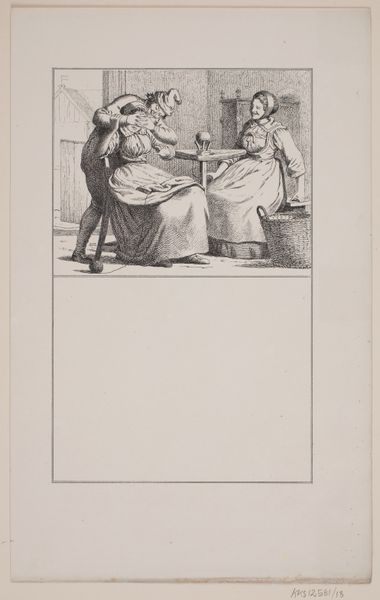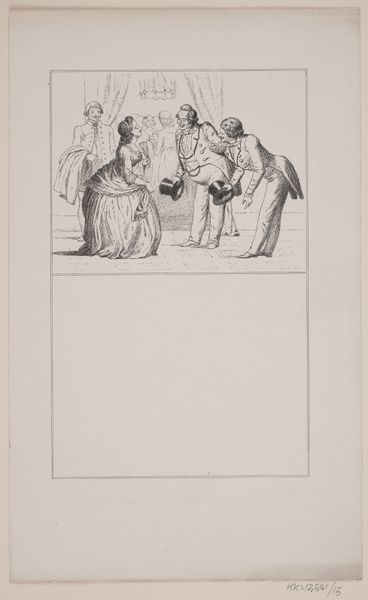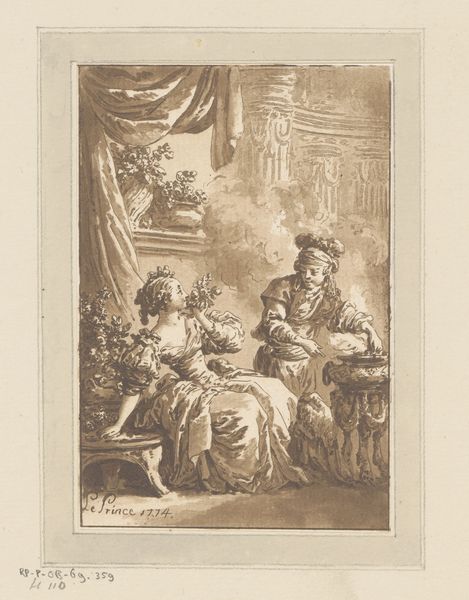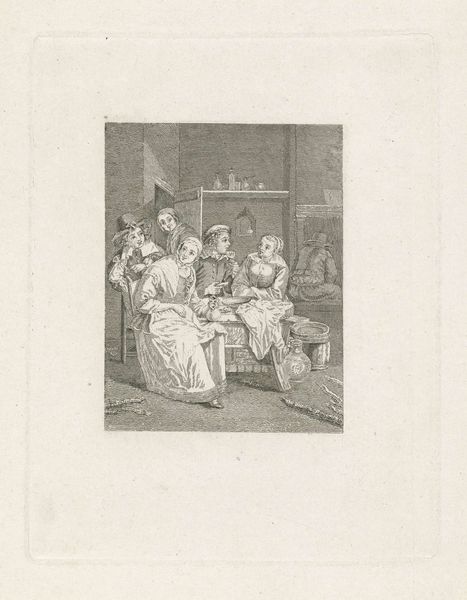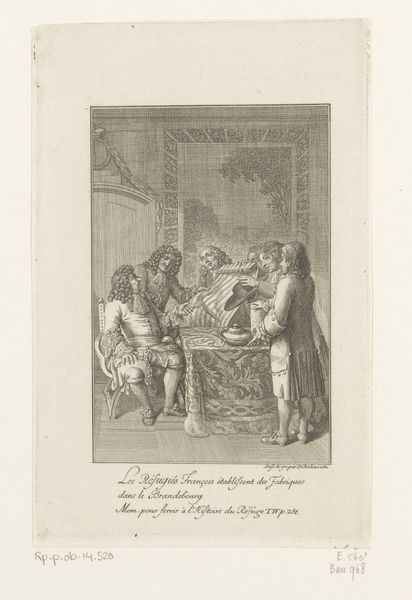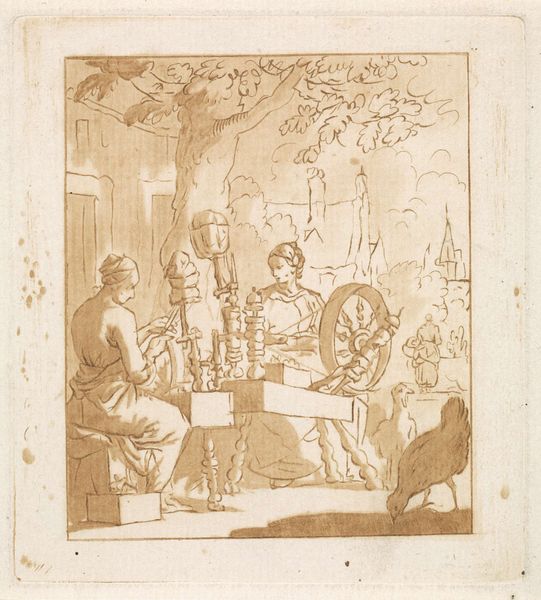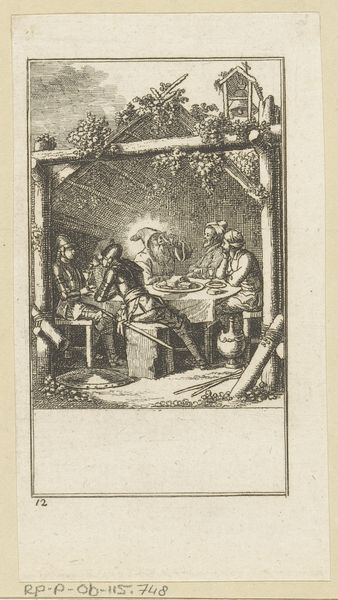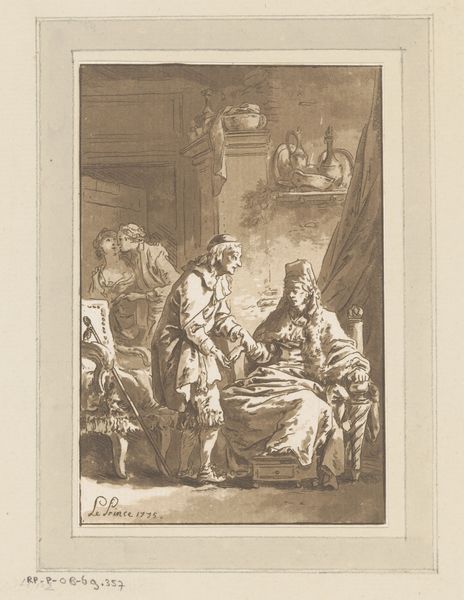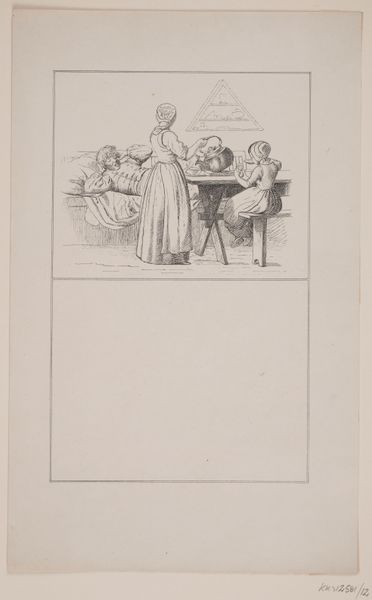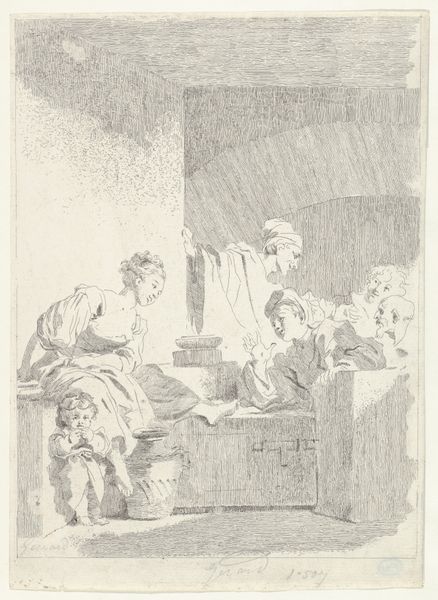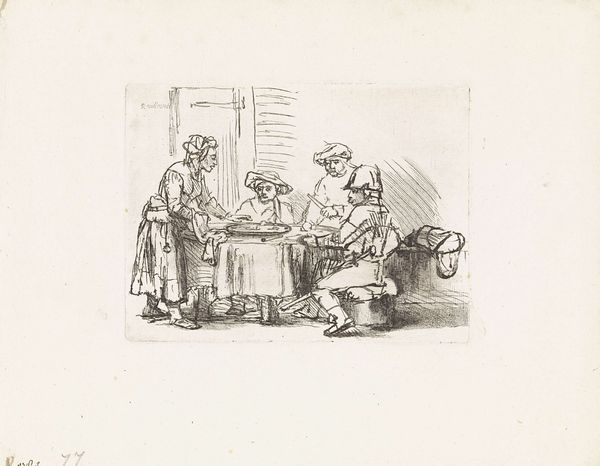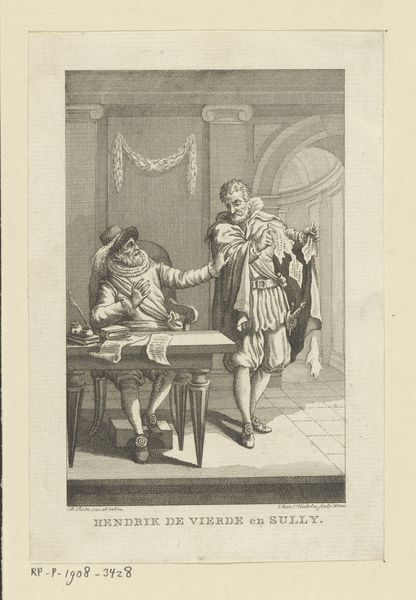
Dimensions: 262 mm (height) x 165 mm (width) (brutto)
Curator: This lithograph is entitled "Sorteper," made by Adolph Kittendorff in 1862. It's currently part of the collection at the SMK, the National Gallery of Denmark. Editor: Immediately, I'm struck by the composition and the apparent gloom hanging over the scene, despite the seemingly mundane activity depicted. There's an enclosed feeling created by the placement of the figures around the table, almost a sense of apprehension. Curator: That feeling of gloom you're picking up on may be influenced by the historical context. Mid-19th century Denmark was experiencing immense social changes. Consider this print through the lens of the lives of women in particular, bound by specific codes, but also forming intimate social bonds through shared pastimes. Editor: Absolutely, and the card game, "Sorteper," also known as "Black Peter," would have been instantly recognizable to viewers. The game centers around avoiding drawing the "Black Peter" card, thus becoming the loser. What visual symbolism can we glean from something like this? What do we make of who holds that figurative black spot within society itself? Curator: Good question. Games of chance during this time can reflect broader anxieties about fortune, status, and power. The drawing style, with its emphasis on realistic depictions of clothing and faces, anchors the scene in everyday reality, yet it also suggests something beyond the surface. Editor: Exactly! The smoke curling upwards, the subtle expressions – especially the knowing smirk of the man across the table. All the players look downcast and wear humble caps, typical garments of women during the period. Those humble figures suggest themes of class, gender, and the unseen narratives within everyday life. Who really holds power, the "Black Peter," within this small community? Curator: This invites us to ask: Who benefits from these unspoken inequalities? Viewing "Sorteper" this way encourages discussions about access, privilege, and societal roles, particularly for women who lacked agency during the 19th century. The artist thus compels us to view our current socio-economic structure with the knowledge that there are communities today for whom playing fields are just as unjust. Editor: Precisely. It prompts us to reconsider historical narratives by focusing on who is included, excluded, and how systems of advantage and disadvantage are perpetuated. Curator: Yes, by exploring gender, class, and social structures within the scene, this piece opens up rich and poignant conversations. Editor: And leaves us to wonder who has been handed the metaphorical “Black Peter” today.
Comments
No comments
Be the first to comment and join the conversation on the ultimate creative platform.
